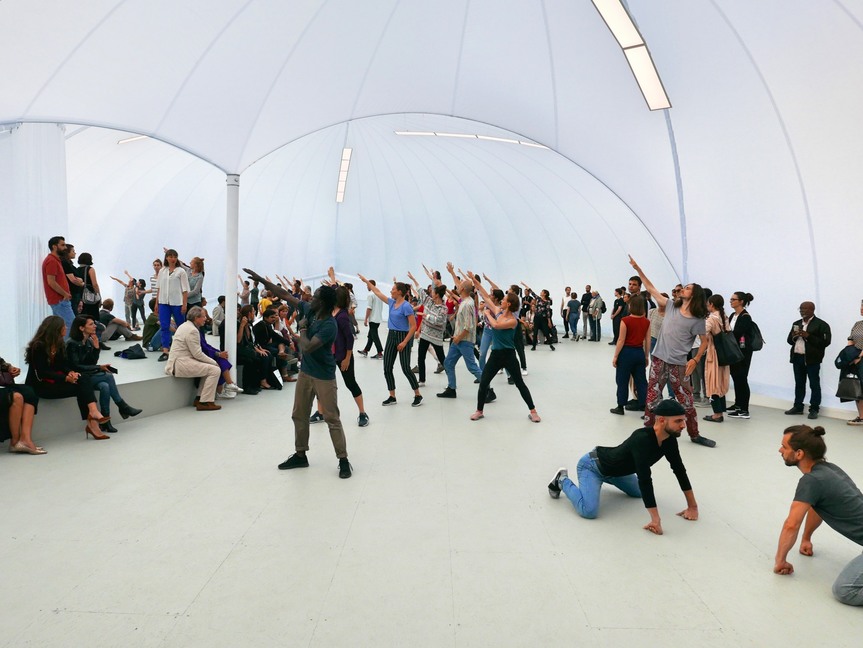
R
E
V N
E
X
T
Highlights from Art Basel in Basel 2019
Messeplatz, home to Art Basel in Basel, with an igloo-like temporary structure for ALEXANDRA PIRICI’s performative installation Aggregate (2017–19). All photos by HG Masters for ArtAsiaPacific.
The Basel bubble is a real and disorienting phenomenon. For one week every June, the small Swiss city at the borders of both France and Germany is filled with art exhibitions and art fairs attended by well-heeled collectors, gallerists, curators, artists and scenesters. The trams run routinely, the cars stop for pedestrians, the rest of the world feels remote. This year during Art Basel 49 and the city’s satellite fairs of Liste, Volta and the newly opened June, the small contingent from Asia who had arrived in Switzerland was watching Hong Kong with anticipation, with massive demonstrations and a strike against an extradition bill pending in the Special Autonomous Region. But for most of Art Basel’s European clientele, these events were remote and obscure, their significance hard to understand. Meanwhile Switzerland had its own week of demonstrations, with June 14 declared as the national Frauenstreik (Women’s Strike). In Basel, the turnout for an evening rally was massive, as the parade was long enough to cover the two main bridges simultaneously and it effectively blocked tram service for the evening.
Inside the exhibition halls at Messeplatz at Art Basel were more than 290 galleries presenting works that they plan all year to show at the event, which remains the most prestigious on the international calendar. This being a Venice Biennale year, many of the artists given prime placement in gallery booths were artists from Ralph Rugoff’s central exhibition or the many national pavilions and collateral exhibitions. Meanwhile Art Basel had its own #MeToo dust-up in the Unlimited sector over images in an Andrea Bowers installation that featured women who had been sexually assaulted and made their cases public on social media. One of these women, writer Helen Donahue, objected to her story and images of herself becoming a part of an artwork without her consent, which, via the social-media-outrage-industry, ultimately led to the artist modifying the work. More shockingly but seemingly untroubling to most visitors was the presence of a nearly 80-year-old Cuban man selling eggs in a simulated version of his actual storefront—at a moment when the Cuban population is facing food shortages—in what is an artwork by the artist Sislej Xhafa. The eggseller had never left Cuba before becoming part of this artwork and he was displayed in the art fair in the most horrifically objectifying manner, as hordes of visitors snapped photos of him sitting on a chair in the doorway, and he was largely unable to communicate with them. It was one of those moments when the real world came to Basel in the most stark and morally dubious fashion and yet it still didn’t manage to burst the bubble. But of course, indifference, “neutrality,” and distance from the rest of the world are what makes Switzerland itself. Controversies and outrages aside, here’s a look at some of the highlights and discoveries from in and around Art Basel 49, which included the performative installation Aggregate (2017–19) by the Romanian choreographer Alexandra Pirici, held on the Messeplatz.
HG Masters is the deputy editor and deputy publisher of ArtAsiaPacific.
The 2019 Art Basel in Basel is on view at Messe Basel until June 16, 2019.
To read more of ArtAsiaPacific’s articles, visit our Digital Library.
















